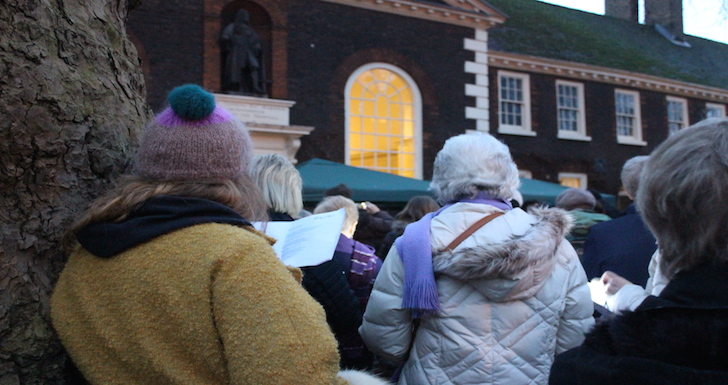At The Geffrye Museum, in London’s Hoxton district, there’s still one important Christmas tradition to honour – Twelfth Night. For the last 23 years, the museum has celebrated the end of the festive season with the traditional burning of the holly and the ivy, along with carol singing and stories of Epiphany.
The cards and wreaths have all been taken down. Discarded Christmas trees that once lit up cosy living rooms now line my London street waiting to be collected by the refuse men, their shiny baubles carefully packed away for another year. There’s a distinct nip in the air and the beginnings of a new year are visible all around. Adverts adorning the London Underground all speak of new diet books, gym memberships and sunny holidays abroad.
As the late afternoon light starts to fade across the rooftops of the city, people gather around the Christmas tree at this historic building, once an almshouse. Glasses of mulled wine and slices of Twelfth Night cake are handed out to a hundred or so revellers who warm themselves next to the bonfire. There’s enthusiastic singing accompanied by a brass band and a nod to toast the person standing next to you with ‘Eat, drink and be merry’.

Twelfth Night parties were popular in Britain in the 18th and 19th centuries when people came together to share a meal and a special cake. In Victorian times, this was a rich fruit cake elaborately decorated with marzipan and icing. Hidden inside the cake was a dried bean and a pea. Regardless of their status in the household, whoever found the bean was crowned king for the night and could rule the house, and whoever got the pea, became the queen.

It’s a tradition that’s still celebrated on the continent. When I lived in Paris, the boulangerie would do a brisk trade in ‘Galette des Rois’, the French equivalent. It’s quite different – a sweet almond tart made with layers of puff pastry. Parisians rush home from work with cake boxes tied exquisitely with ribbon and sold with a gold paper crown for the ‘king’. Inside the tart there are tiny painted ceramic figures representing the bean and the pea. I still have a ceramic angel from the day I was crowned queen, now a sentimental lucky charm.
While the rest of London hits the gym and reduces its collective calorie intake, it’s comforting to give gratitude to twelve days of feasting by keeping the tradition alive and well. As a little slice of the city eats cake, young children across France are beaming with delight. Proudly wearing a crown and tucking into delicious almond tart, they are pondering how to rule their kingdom for the night. This is my kind of a start to a new year. Long may the tradition reign.
Visit the Geffrye Museum year-round to see its exhibition of eleven period rooms spanning from 1600 to the present day. Each room represents the main living space of a London home used by a family and their guests. There are monthly tours of the almshouses. The Christmas Past exhibition takes place every year from November- early January.

The Foodie Travel Guide
Sally is the founder and editor of The Foodie Travel Guide. She travels around the UK and beyond in search of the best foodie days out, tasting experiences and delicious places to stay. She loves a glass of English sparkling wine, afternoon tea with friends and escaping London for gastronomic adventures.
